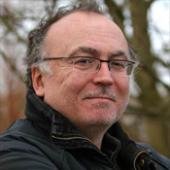DANTE Celebrates 20 Years Of Network Innovation
U.K.-based non-profit network company develops innovative technology that connects Europe's leading research and educational institutions, helping address issues from climate change to medical breakthroughs.
July 10, 2013

DANTE (Delivery of Advanced Network Technology to Europe), a Cambridge, U.K.-based non-profit tech company that plans, builds and operates large-scale advanced networks for research and education, is celebrating 20 years of helping global research and education communities.
The company, which boasts that it operates enough fiber to stretch around the earth five times, has created and managed four consecutive generations of its original network, developed in 1993. The latest incarnation, GÉANT, operates at speeds from 100 to 500 Gbps and connects more than 50 million users at 10,000 institutions across Europe, supporting research in energy, the environment, space and medicine. The European Commission uses GÉANT as a blueprint for funding similar networks all over the world.
[ BlueBEAR II will help University of Birmingham researchers tackle fuel efficiency challenges and more. Read Birmingham Amps Up Research With New Linux Supercomputer. ]
"It is not just about technology," said Dai Davies, one of DANTE's founders. "Services play an increasing role enabling all researchers, not just the technically literate, to benefit from [advanced research and education] networks." Davies pointed out that in 1993 e-mail was a new service, while today DANTE offers many more advanced services designed to allow researchers to manage their own network needs.
"Twenty years ago we could never have dreamed that research and education networking would grow to the extent it has today," said DANTE general managers Niels Hersoug and Matthew Scott. "By enabling people to work together regardless of location, and to effortlessly exchange huge volumes of data, DANTE's work is advancing innovation, economic development and productivity in ways that will benefit us all. Be it through advances in climate research, medical developments, food production or high-energy physics, they all rely on the high-speed networks of DANTE and its partners."
How did DANTE get started? When research networking in Europe first started in the late 1970s, the DANTE team explained, it was limited to the developments of individual countries and their National Research Networks, or NRENs. It soon became clear that a consolidated approach, with coordination at a European level, was needed. This led the NRENs to group together and create a centralized entity that could manage pan-European research networking.
"I give my full congratulations to DANTE for 20 years of networking excellence," said Neelie Kroes, vice president of the European Commission and the leader of Brussels' digital agenda programs. "DANTE's work is essential to the European and global research community. World-class internet networks, through GÉANT and the regional networks it manages, is fundamental to realizing the EU's 2020 vision for the European Research Area and to helping us tackle societal challenges such as food and energy security, health and aging, and environmental protection. DANTE has my full support and well wishes to continue its innovative journey in support of research and education, across Europe and beyond."
It's not only Europe that needs such networks. Most research today is data-driven and collaborative, involving multiple people, institutions, countries and even disciplines. From field bioinformatics to deep space research, the amount of data to be processed is increasing exponentially. Every day, for instance, the Worldwide Large Hadron Collider Computing Grid (WLCG) processes more than 1.5 million jobs -- equivalent to a single computer running for more than 600 years.
By exchanging these high volumes of data, which would likely be prohibitively expensive over commercial networks, scientists are able to compare large datasets for faster, more accurate analysis.
Read more about:
2013About the Author
You May Also Like




